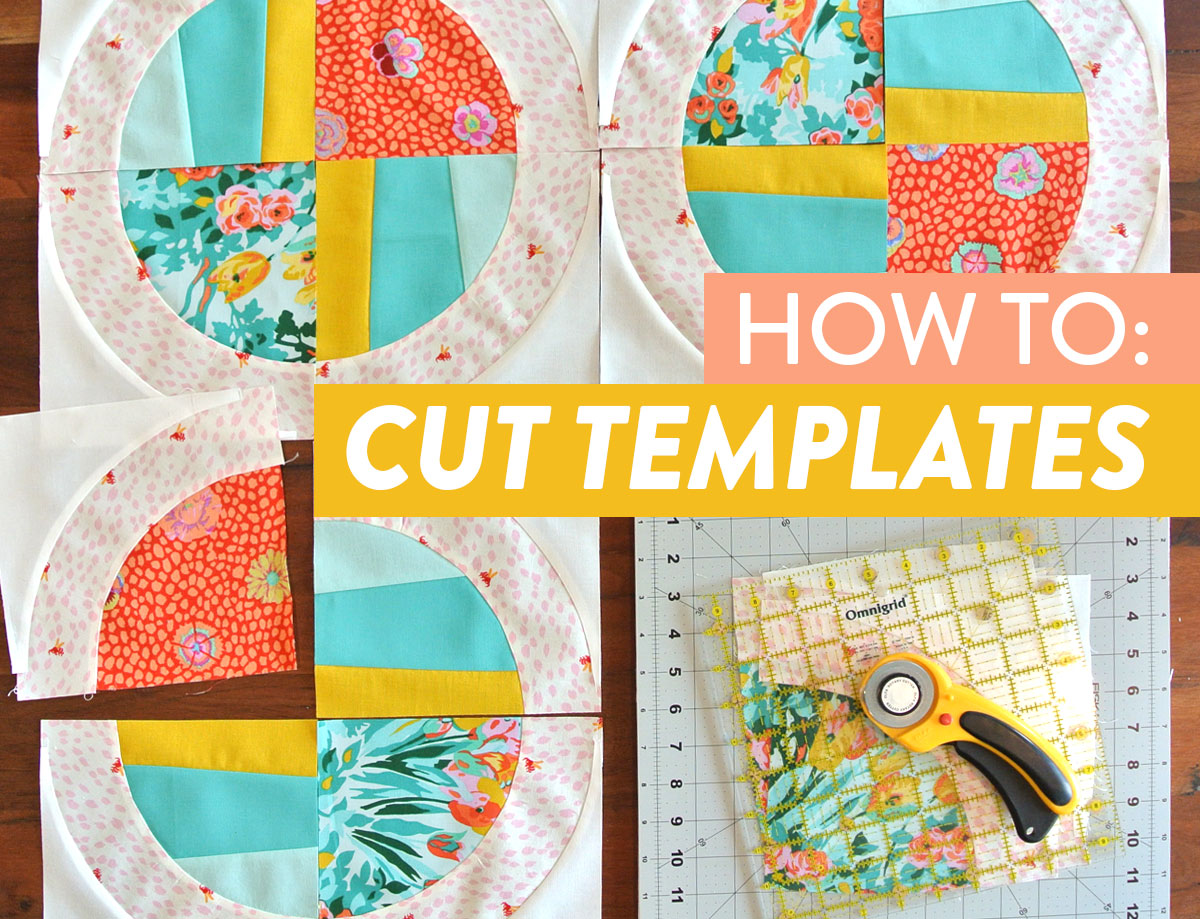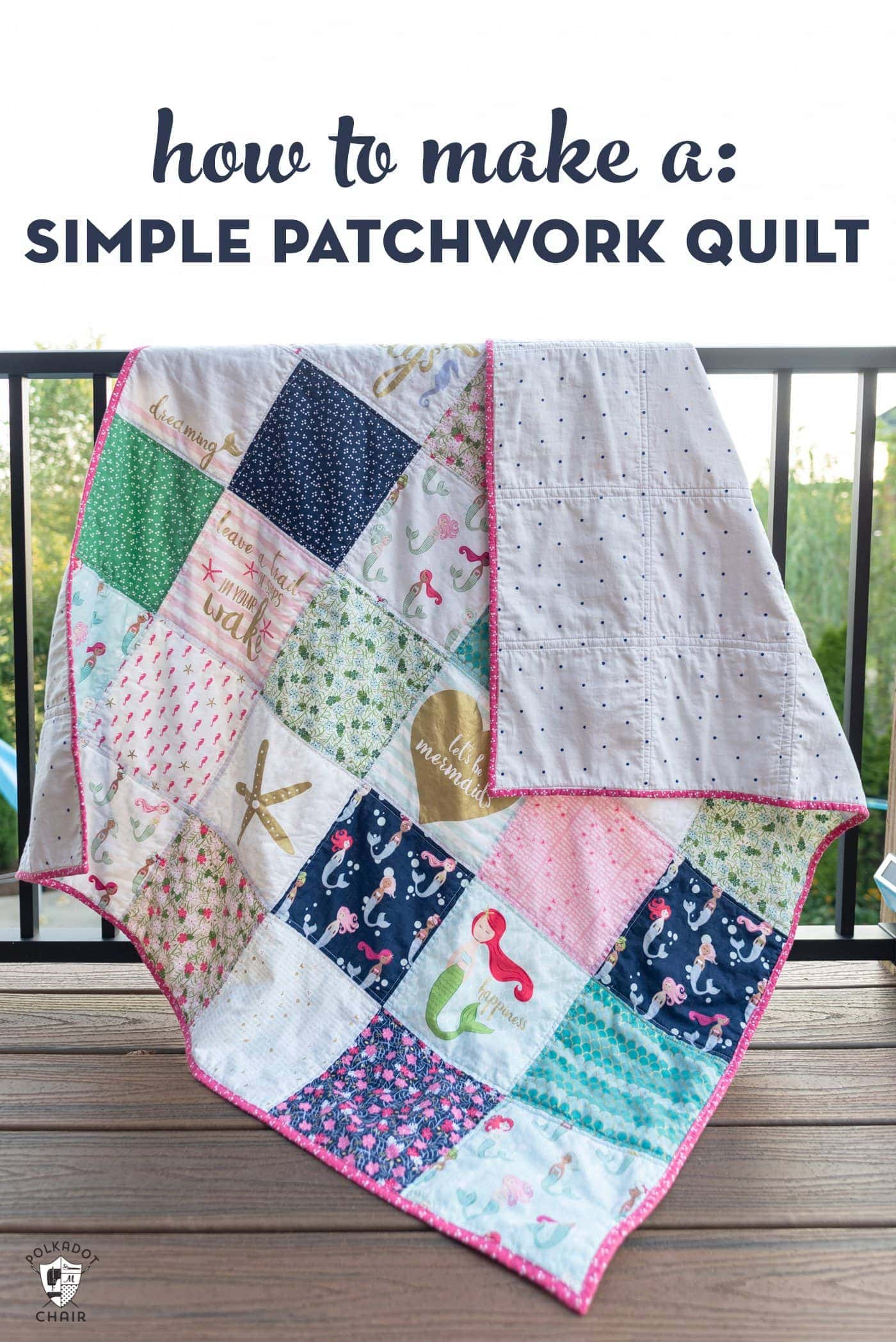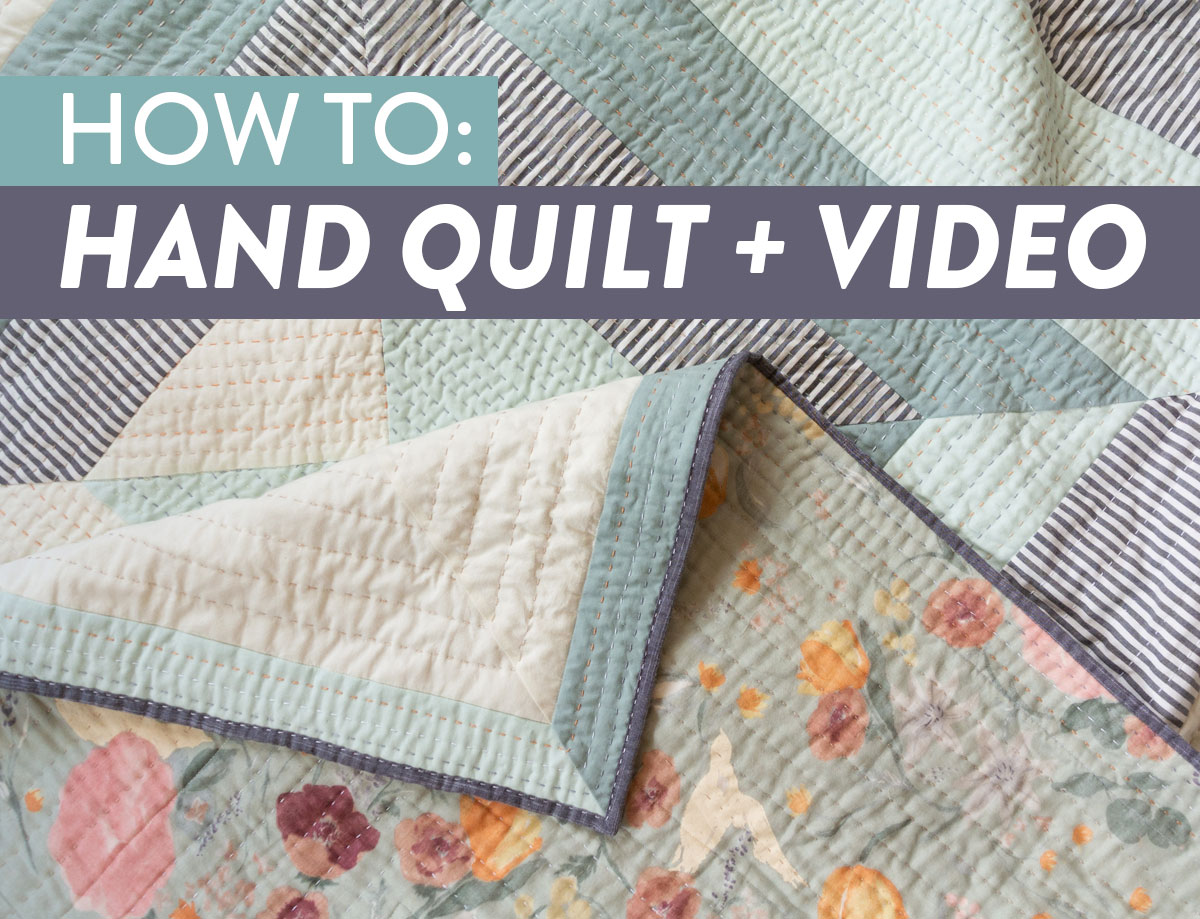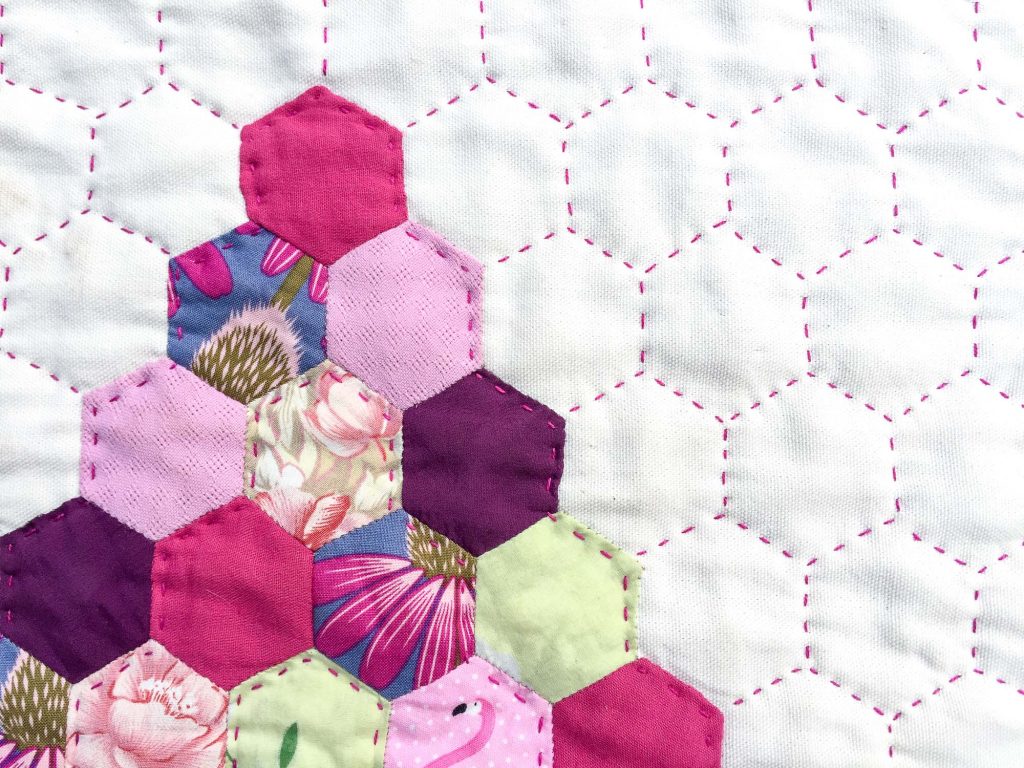If you’re looking for a traditional and rewarding way to finish your large quilt, then hand quilting is the perfect choice. Hand quilting is an age-old skill that has been passed down through generations and is still widely used today. In this step-by-step guide, we’ll show you how to hand quilt a large quilt, from preparation to the finishing touches. So grab your materials and let’s get started on mastering the art of hand quilting your large quilt.
Prerequisites

Video: Watch a video how to quilt a large quilt by hand to get a better understanding of the process.
Materials Needed
Gather the materials needed for hand quilting. This includes a quilt top, batting, backing, quilting thread, quilting hoop, thimble, and needle.
Preparing the Quilt
Lay the backing fabric flat on the work table. Place the batting on top of the backing fabric. Place the quilt top on top of the batting. Smooth out the quilt layers. Pin the layers together. Place the quilt in the quilting hoop.
Thread a needle with quilting thread. Start quilting in the center of the quilt and work outward. Use a thimble to protect your finger while quilting. Quilt in a continuous line, making sure to keep the stitches even.
Begin Quilting

Positioning the Quilt
Place the quilt on a flat surface. Use a table or floor with plenty of space to stretch out the quilt. Make sure the batting is not bunched up by smoothing it out.
Quilting the Top
Choose a design that will be used to quilt the top. Popular designs include straight line quilting, curved line quilting, and quilting with a template.
Quilting the Bottom
Secure the quilt by tacking it to the table or floor with pins or tape. To prevent bunching, quilt in small section at a time. Move the quilt as needed to complete the design.
Finishing the Quilt
Remove the pins or tape and trim any excess batting or backing. Tie or bind the quilt with yarn or fabric strips. To give the quilt extra stability, backstitch the binding or tie a knot in each corner.
Video Guide

- Begin by gathering the necessary materials: a quilt top, batting, backing fabric, and quilting thread.
- Layer the quilt top, batting and backing fabric in that order and pin securely.
- Using a quilting hoop, secure the quilt top in place and begin to quilt.
- Use a quilting stitch such as a running stitch or outline stitch to join the pieces of the quilt top.
- Continue quilting the quilt top, keeping the stitches even and consistent.
- Once the quilt top is completed, trim the batting and backing fabric to the same size as the quilt top.
- Using a walking foot and even sized stitches, quilt the batting and backing fabric together.
- Once the quilting is complete, bind the edges of the quilt with a binding.
- Your quilt is now complete!
Tips for Quilting
- Choose the Right Needles: Use the right size and type of needle for your quilt. Longer quilting needles, such as size 10 or 12, are ideal for quilting large quilts. Sharps are the traditional choice, but if you find them difficult to thread, try using a quilting needle with a larger eye, such as a Betweens or Crewel needle.
- Use the Right Thread: Choose a strong, fine quilting thread that blends with the color of your quilt. Avoid thread that is too thick or too thin, as it will not hold up over time. Cotton thread is the most common choice for quilting.
- Use a Thimble: When quilting by hand, a thimble can be a lifesaver. It can help protect your finger from needle pricks, and make it easier to push the needle through thick layers of fabric.
- Use a Walking Foot: If you are using a sewing machine to quilt your large quilt, a walking foot can be a great help. This type of foot helps to evenly feed fabric layers through the machine, so you get an even stitch.
- Keep an Even Tension: Tension is key when hand quilting. Too little tension and the layers will shift and make it difficult to keep your stitches even. Too much tension and your stitches will be too tight and pull the quilt out of shape.
- Take Your Time: Quilting a large quilt can be a time-consuming process, so take your time and enjoy the process. It is a great way to relax, and you will be rewarded with a beautiful finished quilt at the end.
Frequently Asked Questions
What Materials Do I Need To Hand Quilt A Large Quilt?
- Quilt Batting: This is the material that goes between the top fabric and the backing fabric of the quilt and provides cushioning for the quilt. It is available in a variety of thicknesses.
- Quilt Backing: This is the bottom fabric of the quilt. It needs to be large enough to cover the entire quilt when it is finished.
- Quilt Top: This is the top layer of fabric for the quilt. This can be made from a variety of fabrics, including cotton, muslin, and flannel.
- Needles: You will need a variety of needles for hand quilting, including a hand-quilting needle, a beading needle, and a thimble.
- Thread: You will need thread that is strong enough to hold the quilt together securely. Cotton thread is usually recommended.
- Scissors: You will need scissors to cut the fabric and thread.
- Ruler: You will need a ruler to measure your quilt and make sure that it is even.
- Pins: You will need pins to keep the quilt top, batting, and backing together before you start quilting.
How long does it typically take to hand quilt a large quilt?
Hand quilting a large quilt requires a great amount of time, skill and patience. It could take anywhere from a few weeks to several months to complete, depending on the size of the quilt and the complexity of the design. Quilters should also factor in the amount of time they can realistically dedicate to quilting each day. Additionally, the more practice and experience a quilter has, the faster they will be able to complete the project.
What are the Benefits of Hand Quilting a Large Quilt?
- High Quality: Hand quilting ensures a high-quality finish, with clear stitches and an even tension. This ensures that the quilt will last longer and keep its shape better.
- Personal Touch: Hand quilting is a very personal activity, and the quilt will carry the quilter’s own style and technique. This makes the quilt more special and unique.
- Creative: Hand quilting gives the quilter the freedom to be creative with the quilt. The quilter can choose the stitch type, thread color, and quilting pattern to create a one-of-a-kind piece.
- Speed: Quilting a large quilt by hand can take a while, but it can be done in much less time than machine quilting. This is because hand quilting allows the quilter to control the speed and take breaks as needed.
- Cost: Hand quilting is much more cost-effective than machine quilting. It does not require any specialized equipment, so the quilter only needs to buy the fabric and thread.
Are there any special techniques for hand quilting a large quilt?
Stabilizing the Quilt:
- Baste the quilt layers together to prevent shifting.
- Use a hoop or frame to keep the quilt taut while quilting.
Marking the Quilt:
- Use paper-backed fusible webbing to create a pattern on the quilt.
- Use a water-soluble marker to sketch a design onto the quilt.
Quilting:
- Start quilting in the center of the quilt and work outward.
- Use short, even stitches to provide a consistent look.
- Rest the quilt periodically to prevent fatigue.
Finishing:
- Trim loose threads when finished quilting.
- Press the quilt with a warm, dry iron.
Is it possible to hand quilt a large quilt without an embroidery hoop?
Yes, it is possible. Hand quilting a large quilt without an embroidery hoop requires special techniques to ensure an even stitch and a neat finish. Here are the steps to follow:
- Choose the right fabric for the quilt. Cotton and linen fabrics are best for hand quilting.
- Cut the fabric into the necessary sizes for the quilt.
- Layer the quilt with a backing, batting and top fabric.
- Baste the layers together with long stitches.
- Quilt in small sections, starting from the center and working outwards.
- Use a thimble and quilting needle, and quilt the layers together with small, even stitches.
- To secure the edges, use a whip stitch.
- Press the quilted fabric with an iron.
- Bind the edges of the quilt with bias binding.
With patience and practice, it is possible to hand quilt a large quilt without an embroidery hoop.
Conclusion
Hand quilting a large quilt is a time-consuming but rewarding task. With the right materials, supplies, and a little patience, quilters can create a piece of art that will last for years to come. Don’t be afraid to take on this challenge and create something beautiful.






